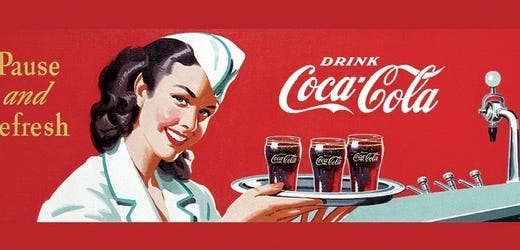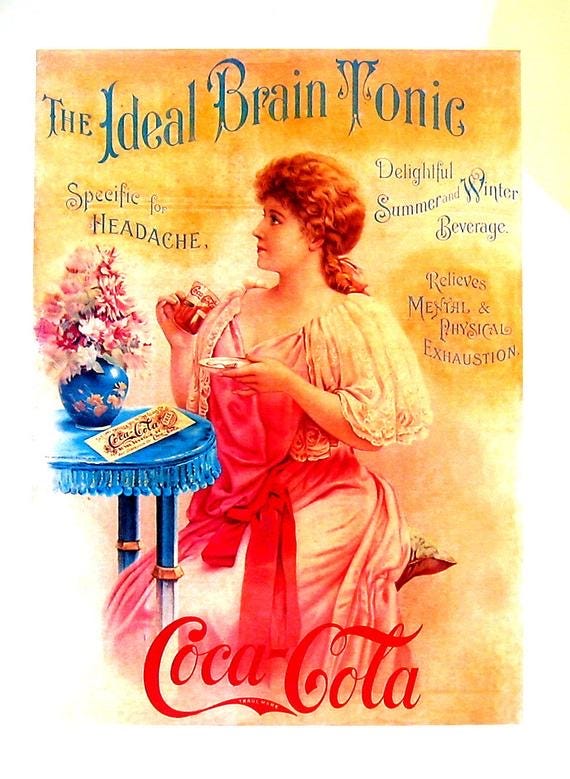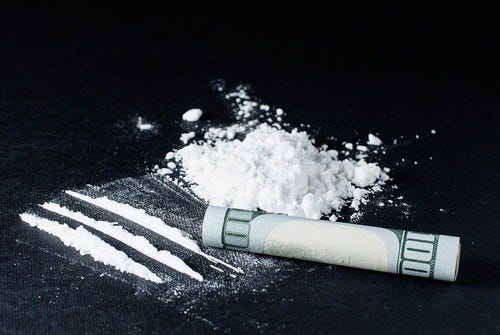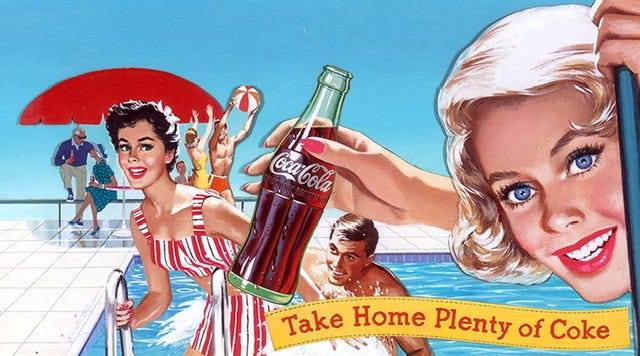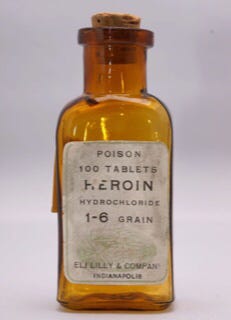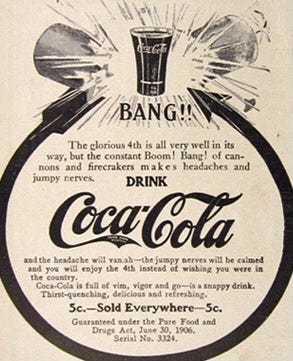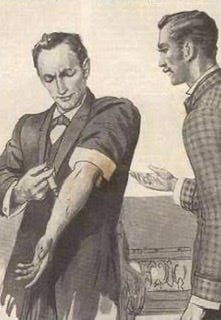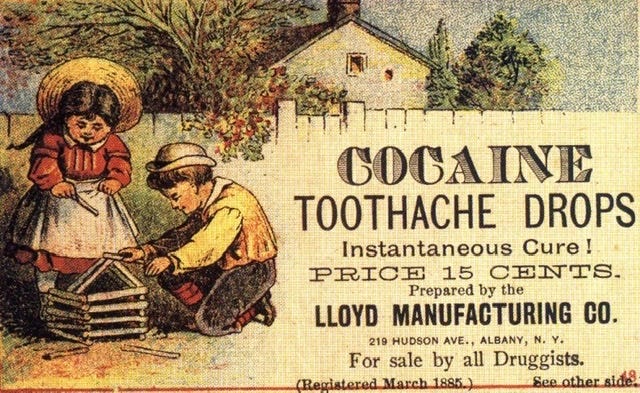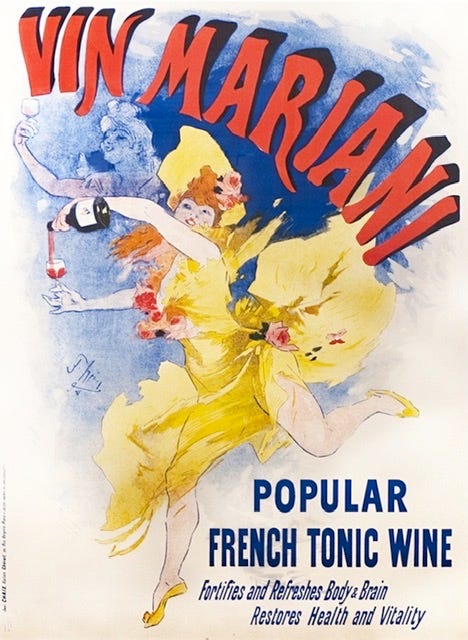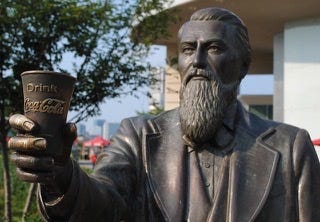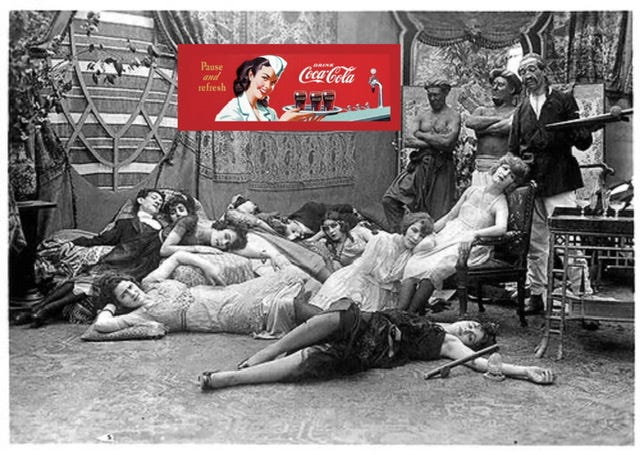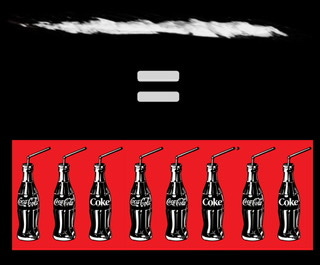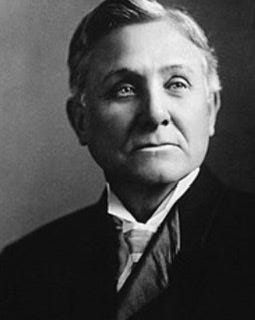Some get a kick from cocaine. I'm sure that if I took even one sniff That would bore me terrifically too Yet I get a kick out of you. “I Get a Kick Out of You” Anything Goes (1934) Cole Porter
Was there cocaine in Coca-Cola? Was that a real thing? The basic question has been answered so many times it no longer stirs controversy. Once upon a time Coca-Cola contained cocaine. Question. Answer. Problem solved.
Why we ask is more about how we perceive drugs and their effects than what went down in an innocent time of cure-alls, effervescence, and Peter Pan. We don’t think much about what Queen Victoria was drinking or why Edison was trying to get his lightbulb to light.
At that time, cocaine was not the second most illegally used drug in the world as it is now. #1 is on sale legally in many American dispensaries today.
Cocaine is everywhere. Not always packaged in little plastic bags for easy consumption, but it is all around us. In 2009, National Geographic reported that 9 out of 10 bills circulating in the U.S. and Canada showed traces of cocaine. Ninety percent, maybe more by now, of our circulating folding cash has been rolled up to snort cocaine. Rolled and shoved up a nostril to deliver the white powder with the punch. There is more cocaine in your wallet right now than in your refrigerated Coca-Cola.
This is not to say the makers of history’s most recognized, most consumed soft drink were guilty of any illegality. As a giant corporation, they have been to court on labor issues, distribution arguments, licensing rhubarbs and everything else that might involve the Disney of soda pop. The image of Coca-Cola has always reflected good people having good times. It is reinforced by trays and calendars depicting all American goodness from the babes of summer to the jolliest Santas of December. This is who they are. In all their history they have never been brought up on drug charges.
Before we get to our era of Scarface, 8-balls, and Celebrity Rehab, let’s hover over a simpler time when the first batch of the serum was brewed in the Atlanta backyard of a former Johnny Reb. Here was a time when toot was a sound made by trains, blow was something the wind did, and snow was what you shoveled off your sidewalk. The greatest addiction fear of the day was over the demon rum. As temperance caught on, a cultural shift resulted in the shuttering of Eugene O’Neill lost dreams saloons in favor of bright candy-colored-family-friendly soda fountains. Here, the only buzz came from the bees, as well as the sugar and caffeine. And just a pinch of John Pemberton’s cocaine-laced beverage.
Morphine, opium, and heroin could also be purchased over the counter. They and other addictive ingredients were prescribed to cure everything from neuritis and neuralgia to headaches, bad breath, depression, and impotence.
It was a time of limited or no regulations. Newspapers were filled with advertisements for wonder tonics.
The most popular fictional character of the day, Sherlock Holmes, had a bit of a monkey on his back. Arthur Conan Doyle’s cerebral detective was a habitual cokey, fond of a “seven-per-cent solution” self-administered through injection.
“Perhaps you are right, Watson,’ he said, ‘I suppose that its influence is physically a bad one, I find it, however, so transcendently stimulating and clarifying to the mind that its secondary action is a matter of small moment.’”
The history of cocaine dates back to around 3,000 B.C. South American tombs have been discovered with baskets of coca leaves, presumably to give their occupants a lift in the next world. Dr. Monardes de Seville, the conquistadors traveling physician, observed the Incas working long hours thanks to the extra energy they received from chewing coca leaves. He was the first to transport this miraculous foliage back to Europe for further study.
The leaves of Erythroxylon coca had been consumed for thousands of years. Scientists would figure out how to mine the psychotropic possibilities, an important step to getting the product out on the street. Friedrich Gaedcke first isolated the alkaloid in 1855. Karl Koller believed these mind and other parts numbing solutions would be perfect for ophthalmologists. He conducted an 1884 experiment, dropping a solution in his eye, then sticking his open eye with a pin.
In the 1880s, Sigmund Freud published his Uber Coca, noting the effectiveness of cocaine in treating alcoholism and morphine addiction. It even worked for indigestion, which he got from eating too much ice cream. The father of modern psychology later regretted his enthusiasm and retracted his paper when he noticed that morphine addicts were simply replacing one buzz with another. Freud’s own excessive cocaine indulgence led to three nasal operations.
Twenty years after the Civil War, the reconstructionist South was a hotbed for cure-alls and quackery. In a rush to corner a part of this depressed market, several remedies were offered including Nyal’s Compound Extract of Damiana, Ryna’s Hay-Fever-n-Catarrh Remedy, Dr. Tucker’s Specific, AZ-MA-SYDE, and Dr. Mitchell’s Coca-Bola. They offered little relief and they all contained cocaine.
Another piece of the equation had formed around a popular French import of the time, Vin Mariani, “The Original French Coca Wine for Body and Brain.” It was a red Bordeaux laced with the whole-leaf extract of coca. Its originator, Monsieur Angelo Mariani, had received a gold medal from Pope Leo XIII for his wonderful discovery.
A competitor, Metcalf’s Coca Wine, painted a glorious picture:
“Athletes, Pedestrians, and Base Ball Players have found by practical experience that a steady course of Coca taken both before and after any trial of strength or endurance will impart energy to every movement, and prevent fatigue and waste from the system. Elderly people have found it a reliable aphrodisiac, superior to any other drug.”
Enter the 53-year-old pharmacist John Stith Pemberton. Wounded by a sabre to the chest in the Battle of Columbus, Permberton had become addicted to morphine. He registered his own “French Wine Coca - Ideal Nerve and Tonic Stimulant” in 1885. A popular notion held that Pemberton’s assistant could “audit the composition of a batch of syrup merely by sniffing it.” This was the forerunner of Coca-Cola. The Real Thing came six months later, on May 8, 1886, the result of a series of experiments performed by Pemberton to remove the alcoholic content.
“He had already made some vital changes toward developing a new formula. Eliminating the wine, he added an extract from the Africa kola nut, a stimulant brought over with the slaves, reputed to work miracles on a hangover. He blended the extract of coca with the kola extract to form a serum base for a new and wondrous “Brain Tonic,” but the bitter taste of his two featured ingredients needed to be masked. In May, he finally hit upon a combination of oils and flavors of the extracts that suited his taste. The result for the serum base was Coca-Cola.” The Cola Wars (Everest, 1980) / J. C. Louis and Harvey Yazijian
Cocaine was a by-product of the five ounces of coca leaves Pemberton included in every gallon of syrup. His partner came up with the name, changing the K in Kola to a C, and even designing one of the world’s most familiar logos, in a time when most children miraculously read cursive.
The first Coca-Cola, though not fizzy, was sold at Jacobs’ Pharmacy, a soda fountain at the corner of Peachtree and Marietta streets. The ultimate concoction resulted when a headache-stricken customer staggered through the door. The afflicted patron could not wait for proprietor Willis E. Venable to take a dozen steps to the end of the bar to mix the syrup with tap water. The soda water fountain was right there, as was Pemberton’s sweet elixir. The customer gulped down the world’s first Coke As We Know It.
Pemberton didn’t live to see his most popular concoction teach the world to sing in perfect harmony. He died in Dixie in 1888. The serum and company were acquired in 1891 by Asa Griggs Candler, who turned a novelty into a major corporation. Candler changed the formula around for taste purposes. A very religious man, the loudest singer in the Sunday choir by some reports, he was a teetotaler who thoroughly supported his drink’s temperance status. However, the miracle soda still contained cocaine.
So how much cocaine was in that bottle? Experts believe the normal modern “dose” or “line” of cocaine is roughly 50 milligrams for a skinny to normal portion, and 75 milligrams for those big fat bad boys. Bottles of Coca-Cola before the great cutback we are coming to packed a bit of a numbing punch, about 9 milligrams. Therefore, to reach the equivalent of a modern line one would need to chug about eight 8 oz. bottles of Coca-Cola.
“I have offered to give up my business if it could be shown that a single case of the cocaine habit has been contracted from using Coca-Cola. If I thought it could possibly hurt anybody I would quit the manufacturer of Coca-Cola instantly, although it is the whole of my business.” --Asa Candle, The Atlanta Constitution, May 16, 1892
By 1902, reports of toxic cocaine poisonings as well as suicides were putting a severe damper on the legal drug business. Virginia considered banning Coca-Cola, even with all the positive reinforcements from government chemists that the now softer soft drink was harmless. Quietly and without fanfare, Coca-Cola switched to the use of spent coca leaves (the remains from the preparation of cocaine) in 1903 which to the amount of the drug in the beverage down to almost nothing. Almost.
Legally, Coca-Cola was drug-free before it was required by law. Candler had taken his action long before the passage of the Pure Food and Drug Act in 1906, which sought to end America’s two decade flirtation with dangerous drugs. Several ignored the new laws, however, and in 1909 it was estimated that no fewer than seventy Coca-Cola imitators (beverages such as Kel Kola and Kaw-Kola) still contained cocaine.
In 1920, Justice Oliver Wendell Holmes, while upholding the validity of the Coca-Cola trademark, observed that there once had been a “very small” amount of cocaine in Coca-Cola, but that it was “eliminated from the plaintiff’s compound.” However, the subject remained a sore one with Asa Candler. In the Roaring Twenties, a Candler employee made the damnable mistake of asking the soda tycoon to join him and “have a dope.” Candler blasted: ‘It is not dope! There is NO DOPE IN IT! It is COCA-COLA!”
By 1929, the last traces of the drug were out of the soft drink for good. This means the night baseball legend Babe Ruth had “the bellyache heard round the world,” the night he downed a dozen hot dogs and eight bottles of Coca-Cola in the middle of a double header, he probably had a little extra zip in his step until the hot dogs took their toll and landed him in the ER,
Over the years, Coca-Cola has kept plenty of its mystery. “Merchandise 7X,” the secret mixture of the flavors and oils that give Coke its taste and disguises the flavor of the coca leaf and kola nut was said to be known by “fewer than ten people.” It resides in a giant vault at Coca-Cola’s home office in Atlanta.
The cocaine is long gone or spent, as we’ve learned to say. Coca-Cola is still the largest consumer of defanged coca leaves in the U.S. Every year the Stepan Chemical Company of Maywood, New Jersey, brings in 100 metric tons of coca leaves. They are the only commercial entity in this country authorized by the DEA to import coca leaves. Most come from Peru to Jersey, where the process takes place and the leaves are resold to Coca-Cola.
The pharmaceutical cocaine that is extracted is then sold to Mallinckrodt, an Irish firm doing business in the U.S., whose net sales reach around $3 billion annually. The Coca-Cola Company’s net operating revenues worldwide in 2020 amounted to $33.01 billion U.S. dollars. Both numbers are dwarfed by the estimate of the $120 billion to $145 billion that Americans spent annually from 2006-2016 on cannabis, heroin, methamphetamine, and cocaine. In all this math, don’t forget the $253 billion a year Americans spend on liquor.
Rumors still fly. A super sweet one maintains that the “New Coke” recipe introduced in 1985 was actually Diet Coke sweetened with high fructose corn syrup. Another urban legend maintains that the original Coca-Cola was pulled off the market for 72 days so that the pure cane sugar could be replaced by HFCS, resulting in the freshly branded Coke Classic. Now that’s diabolical, dear Watson!
Regardless, the presence of actual cocaine in Coca-Cola is merely a memory, as timely today as the Tin Lizzy and ragtime.
If your day is gone, and you want to ride on, cocaine. Don't forget this fact, you can't get it back, cocaine. She don't lie, she don't lie, she don't lie…….Cocaine —“Cocaine” (1976), J. J. Cale

